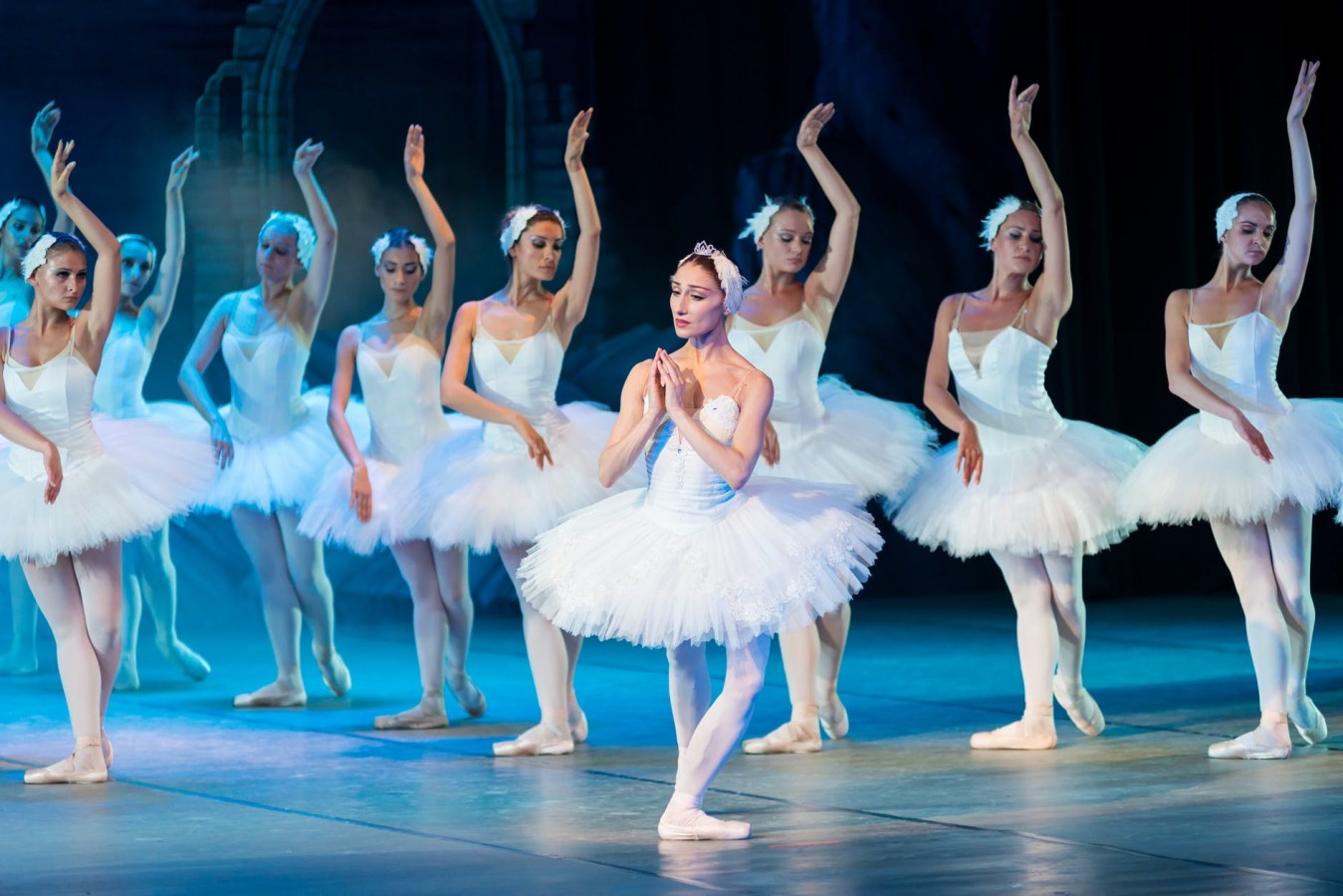Ballet Dance: Definition, History, and Type of Dance

Ballet dance, with its enchanting grace and timeless elegance, stands as a quintessential form of artistic expression that has captivated audiences for centuries. Rooted in a rich history and encompassing a diverse range of styles, ballet dance is a captivating journey through the realms of movement, storytelling, and sheer beauty.
This exquisite dance form showcases a unique blend of athleticism and artistry from the delicate positions of classical ballet to the dynamic expressions of contemporary ballet. In this article, we will explore the definition, delve into the fascinating history, and examine the various types of ballet dance.
What is Ballet Dance?
Ballet dance is a highly stylized and formalized type of dance that originated in the Italian Renaissance courts of the 15th century. Characterized by precise and fluid movements, ballet incorporates specific techniques and positions that convey a narrative or evoke emotions. Dancers often wear elaborate costumes and pointe shoes, which allow them to dance on the tips of their toes.
History of Ballet
The history of ballet is a captivating tale that unfolds over several centuries, blending the elegance of movement with the richness of cultural evolution.
Originating in the courts of Renaissance Italy during the 15th century, ballet has undergone a remarkable transformation, evolving from a social dance into a sophisticated and highly esteemed art form. Here’s a full sequence of ballet dance history:
1. Origins in the Italian Renaissance (15th Century)
Ballet's roots can be traced back to the Italian Renaissance, where it emerged as an evolution of courtly dances. The elaborate spectacles and pageantry of the time laid the groundwork for the formalization of dance, giving birth to a style that would eventually become known as ballet.
Initially, these early forms of ballet were characterized by intricate patterns, gestures, and music, often performed at noble courts as entertainment during lavish events.
2. French Influence and the Court of Louis XIV (17th Century)
The true transformation of ballet occurred in the 17th century, under the influence of King Louis XIV of France. A passionate dancer himself, Louis XIV established the Académie Royale de Danse in 1661, formalizing the training and techniques of ballet.
Pierre Beauchamp, the king's personal dance teacher, contributed significantly by codifying the five basic positions of the feet, a foundation that remains integral to ballet technique today.
3. Romantic Era and Ballet's Golden Age (19th Century)
Ballet's evolution during the nineteenth century in Europe marked a shift in popularity from France to other regions like Russia and Denmark. Despite a decline in France, the art form found new vitality in the eastward spread.
The mid-nineteenth century witnessed the crystallization of ballet's style into a more romantic dance, characterized by the emphasis on the ballerina's grace through soft and fluid movements.
Marius Petipa stands as one of the most revered choreographers in ballet history, renowned for crafting some of the most enduring and classical ballet masterpieces that continue to captivate audiences today.
His contributions to the ballet world are nothing short of transformative, Petipa's choreographic genius breathed life into timeless productions like "The Sleeping Beauty," "Swan Lake," and “The Nutcracker.”
He innovatively melded intricate footwork, graceful movements, and emotive storytelling, elevating ballet to new heights and setting a standard for excellence that persists across generations even until now.
These productions showcased ballerinas adorned in tulle skirts, known as tutus, who danced en pointe, balancing on the points of their toes in specially designed pointe shoes. This era contributed significantly to ballet's development, shaping it into the enchanting and expressive art form we know today.
4. 20th Century Innovations
In the 20th century, ballet underwent a transformation into a mainstream dance form. Dance companies such as the Royal Ballet in England and the American Ballet Theatre in New York played pivotal roles in popularizing ballet, making it more accessible to the masses.
This era witnessed the establishment of numerous schools and companies that trained aspiring dancers from diverse backgrounds, contributing to the creation of some of the world's most accomplished professionals.
As we reflect on the 20th-century innovations in ballet, even a child physical academy such as Rockstar Academy, brings forth a contemporary approach to ballet class for toddlers.
These specialized classes are designed to nurture a love for movement and music from an early age. This approach aligns with the 20th-century spirit of democratizing dance and making it accessible to a broader audience.
Types of Ballet
Ballet has evolved over the years, giving rise to various types and styles that showcase its versatility and adaptability. Each type of ballet possesses distinct characteristics, techniques, and storytelling elements. Here are some notable types of ballet:
1. Romantic Ballet
The Romantic era in the 19th century gave rise to Romantic ballet, characterized by its emphasis on emotion, ethereal themes, and otherworldly elements. This style often features female dancers in long, flowing tutus, portraying supernatural or mythical characters. "Giselle" is a quintessential example of Romantic ballet.
2. Classical Ballet
Classical ballet is the most traditional and well-known form of ballet. It adheres to the techniques established during the 19th-century Romantic era and is characterized by its graceful, flowing movements, precise footwork, and use of pointe work for female dancers. Iconic classical ballets include "Swan Lake," "The Nutcracker," and "Sleeping Beauty."
3. Contemporary Ballet
Blending classical ballet techniques with modern dance influences, contemporary ballet is a dynamic and evolving form. Choreographers like Twyla Tharp and William Forsythe have pushed the boundaries, incorporating diverse movement styles and experimenting with unconventional narratives. Contemporary ballet often allows for greater expression and individuality.
4. Neoclassical Ballet
Emerging in the 1920s, neoclassical ballet breaks away from the narrative-driven focus of classical ballet. Choreographers like George Balanchine and Frederick Ashton introduced a more abstract, geometric approach, emphasizing athleticism and speed. Neoclassical ballet retains classical techniques but often explores new and innovative movement vocabulary.
Ready To Take the Stage?
Ballet dance continues to enchant audiences with its timeless elegance and expressive storytelling. Its rich history and diverse styles make ballet a versatile and enduring art form. As ballet continues to evolve, it leaves an indelible mark on the world of performing arts, enchanting audiences with its beauty and grace.
Curious about the world of ballet and eager to explore your dance potential? Experience the magic firsthand with a free trial ballet class at Rockstar Academy! As a bonus, get a glimpse into the renowned Royal Academy of Dance (RAD ballet testing) methods that form the foundation of our curriculum.
On top of that, we also have Ballet Recital that offers a gateway to the most renowned ballet performances. This event boasts unique choreography, classical melodies, exquisite costumes, and captivating lighting for our beloved children.
Our instructors are passionate about fostering a love for dance in every student, ensuring a supportive and engaging environment for learners of all levels. Contact Rockstar Academy now, and let the journey into the world of ballet begin!
FAQ
1. What are the 3 types of ballet?
The three main types of ballet are classical ballet, neoclassical ballet, and contemporary ballet. Each style has distinct characteristics, techniques, and artistic expressions, contributing to the diversity of the ballet repertoire.
2. Is ballet a classical dance?
Yes, ballet is considered a classical dance form, characterized by formalized techniques, precise movements, and a rich historical tradition.



